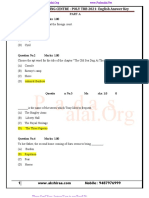0% found this document useful (0 votes)
33 views18 pagesString Handling Complete Notes
The document provides a comprehensive overview of String constructors in Java, detailing various ways to create String objects from different sources such as character arrays and byte arrays. It also explains how to determine the length of a string using the length() method, along with common string operations like concatenation, substring extraction, and trimming. Key points include the immutability of strings and the importance of using string literals for better performance.
Uploaded by
gyashika198Copyright
© © All Rights Reserved
We take content rights seriously. If you suspect this is your content, claim it here.
Available Formats
Download as DOCX, PDF, TXT or read online on Scribd
0% found this document useful (0 votes)
33 views18 pagesString Handling Complete Notes
The document provides a comprehensive overview of String constructors in Java, detailing various ways to create String objects from different sources such as character arrays and byte arrays. It also explains how to determine the length of a string using the length() method, along with common string operations like concatenation, substring extraction, and trimming. Key points include the immutability of strings and the importance of using string literals for better performance.
Uploaded by
gyashika198Copyright
© © All Rights Reserved
We take content rights seriously. If you suspect this is your content, claim it here.
Available Formats
Download as DOCX, PDF, TXT or read online on Scribd
/ 18
























































































